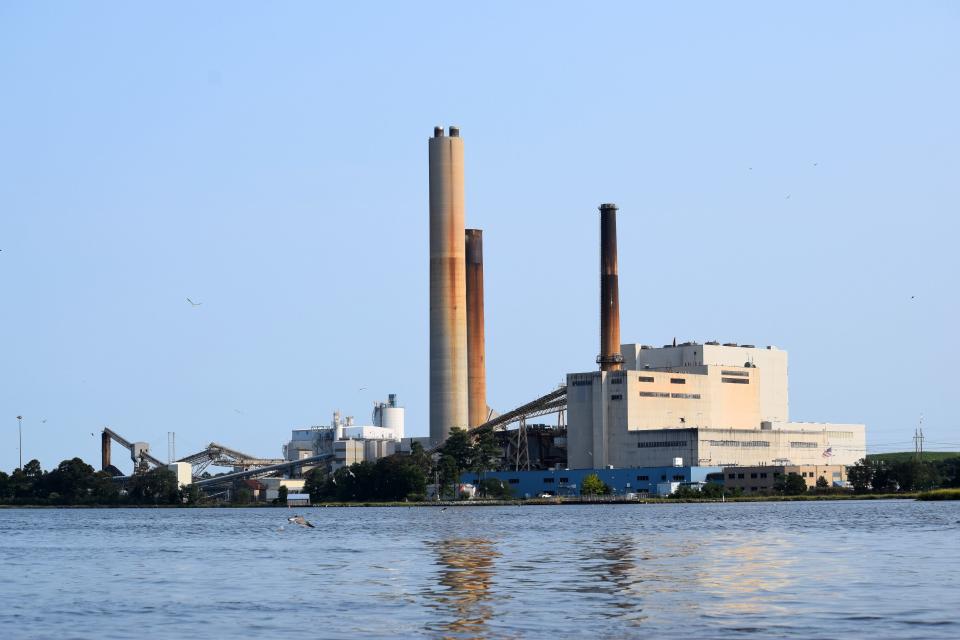Report highlights dirtiest power plants in Delaware
An energy watchdog group recently released a report outlining the dirtiest power plants in the nation.
The report, by Find Energy, an independent website that compares local electricity providers and solar installers throughout the United States, states carbon dioxide emissions are increasingly affecting populations with electricity generation being one of the leading causes behind the added emissions.
"Delaware emits 4,744,249,826.29 kilograms of CO2 emissions from electricity consumption," the Dec. 14 reports states. "The state averages 4,872.07 kilograms of CO2 emissions per capita, which is a better measurement of the state’s emission levels. They rank 24th highest in the nation for emissions per resident."
Among the plants with the highest carbon dioxide emission levels are:
Indian River Generating Station in Sussex County with 430,695,358.86 kg
Garrison Energy Center in Dover with 388,723,768.02 kg
Delaware City Plant in New Castle County with 225,556,945.74 kg
Edge Moor in Wilmington with 110,470,049.74 kg
Hay Road in Wilmington with 607,021,754.64
An estimated 86.75% of the state of Delaware’s electricity is generated using natural gas. Coal and other gas comprise the next highest totals for a fuel type, at 6.51% and 2.99%.
"Fortunately, companies operating in the energy industry are required to report different types of data to various government agencies," said Matt Hope, chief operating officer and co-founder of Find Energy. "We've taken the time to compile this data, making reports like this one fairly straightforward for us to publish. The fact that less than 1% of power plants were responsible for over 40% of CO2 emissions surprised us."
More on alternative energy: Maryland offshore wind expansion: A threat to tourism or climate change solution?
Delaware has the 50th highest amount of electricity-producing plants of any state in the nation. This equates to the 30th most power plants per resident in the nation.
With a population of 973,764, Delaware has 29 power plants, with Indian River Generating Station in Sussex County and Edge Moor in Wilmington both reported with a toxic chemical release, according to Find Energy.
The Indian River facility represents the only coal plant in the state with the majority of others working in natural gas.
IN MARYLAND: Of wind energy, economics and politics: A conversation with Maryland Comptroller Franchot
"There are six providers in Delaware that reported energy loss, including Delmarva Power, Delaware Electric Coop and City of Dover Electric Utilities," the report states. "Combined, these six providers average an annual energy loss of 5.74% of electricity generated. The US average is 2.76%, resulting in Delaware having a rank of 5th best in the US for energy loss efficiency."
According to the Delaware Department of Natural Resources and Environmental Control, when certain types of industrial facilities want to open or change their operations in Delaware, they must obtain a permit or permits for potentially polluting activities.
"An important aspect of the permit process is the opportunity for residents and other members of the public to give their opinion to DNREC," said Nikki A. Lavoie, chief communications officer for DNREC. "If a toxic chemical is permitted, then it would have been evaluated, and public noticed, at the time of permitting. Power plants tend to be 'major sources,' as referred to in Title V of the 1990 Federal Clean Air Act."
That requires the Environmental Protection Agency to standardize air quality permits and the permitting process for major sources of air emissions across the country. Title V source permits are renewed every 5 years, which offers an opportunity to re-evaluate the facility status and ensure proper permitting is in place.
"For more than a decade, Delaware has worked to reduce harmful greenhouse gas emissions and increase resiliency to the impacts of climate change," Lavoie said. "Specifically related to emissions, Delaware’s Climate Action Plan, identifies five action areas, including energy efficiency, renewable energy, transportation, reducing high global warming potential greenhouse gases and natural and working lands."
According to the nationwide data, while some of the plants are larger than average, they still produce significantly more than their share of emissions due to a severe lack of emissions efficiency when compared to other domestic plants.
Most of this lack of efficiency is the result of their choice of fuel types, such as coal and other fossil fuels. The advanced age of these plants is another contributing factor, as they sometimes do take advantage of modern-day, energy-efficient equipment and methods.
Preparing the report included reviewing data from the Environmental Protection Agency and a comprehensive review of individual energy markets and electricity production.
Why you should be aware

Hope explained these emissions outputs are more than double what they should be when comparing their carbon footprint with other power plants in the nation. When compared with many renewable plants or nuclear plants, these 100 power plants look even worse.
"In addition to CO2 and CO2-equivalent emissions, many of the power plants on this list also have what is called 'Toxic Release,'" Hope said. "The EPA tracks various types of substances that are released in many different commercial and industrial settings. Many power plants make the list for toxic release."
Drilling and energy production: How permanent offshore drilling ban would benefit Delmarva, ocean group says
While the toxins that are released from each plant vary, according to Hope, there are potential health and environmental side effects to almost all of them.
Find Energy says the overall goal of the report is to provide consumer awareness.
"Pollution from electricity generation is a current reality that probably won't be going away anytime soon, but the more aware a consumer is the more intelligently they can shop for (if they are in a deregulated state) and use energy," Hope said.
This article originally appeared on Salisbury Daily Times: Dirtiest power plants in Delaware: Report

